In today’s digital age, optimizing online marketing campaigns has become an extremely important factor for the survival and development of any business. With the increase in the number of Internet users, reaching and interacting with customers through online channels is gradually becoming an inevitable trend. This article will help you better understand how to optimize online marketing campaigns, thereby increasing efficiency and creating real values for businesses. The ability to reach potential customers through various online platforms allows businesses to engage with their audience like never before. But what exactly does it mean to optimize online marketing campaigns? And why is it essential for your business’s growth?
The Evolution of Digital Marketing: Digital marketing has evolved significantly over the past few decades. From simple email campaigns and banner ads, the industry has moved towards more sophisticated techniques, like personalized content, data-driven strategies, and automated customer interactions. This evolution has been driven by advancements in technology and changes in consumer behavior.
The shift from traditional marketing to digital marketing has provided businesses with unprecedented opportunities to connect with their audience. However, with these opportunities comes the challenge of standing out in a crowded digital landscape. This is where optimization plays a crucial role.
The Importance of Optimization: Optimization in online marketing is akin to refining a piece of art. It’s about ensuring that every aspect of your campaign is fine-tuned to achieve the best possible results. Whether it’s increasing your website’s visibility on search engines, improving the click-through rate of your ads, or enhancing customer engagement on social media, optimization is key to maximizing your return on investment (ROI).
In the following sections, we will delve deeper into the strategies and techniques that can help you optimize online marketing campaigns effectively. By the end of this guide, you’ll be equipped with the knowledge and tools to elevate your digital marketing efforts and achieve your business goals.
Optimize Online Marketing Campaigns
Optimizing your online marketing campaign is more than just choosing an Advertising platform or running Social Media campaigns. It is a strategic process that involves many different steps, from market research, identifying your target audience, to analyzing results and continuously improving to achieve the best results.
Online marketing campaigns are a series of strategic activities designed to promote a product, service, or brand online. These campaigns leverage digital channels like search engines, social media, email, and websites to reach and engage specific target audiences. Online marketing campaigns are vital because they provide businesses with the ability to reach a global audience, track performance in real time, and adjust strategies as needed to maximize return on investment (ROI).
At their core, online marketing campaigns aim to achieve specific objectives, such as increasing brand awareness, generating leads, driving website traffic, or boosting sales. These goals guide the campaign’s design, execution, and evaluation, ensuring that every action taken contributes to the overarching strategy.
Optimizing online marketing campaigns is not just a buzzword; it’s a necessity in the digital age. The ability to reach and engage with your target audience efficiently can determine the success or failure of your marketing efforts. So, how do you go about optimizing these campaigns?
In this section, we’ll delve into the fundamentals of online marketing campaigns, exploring their components, significance, and the various channels utilized to reach potential customers.
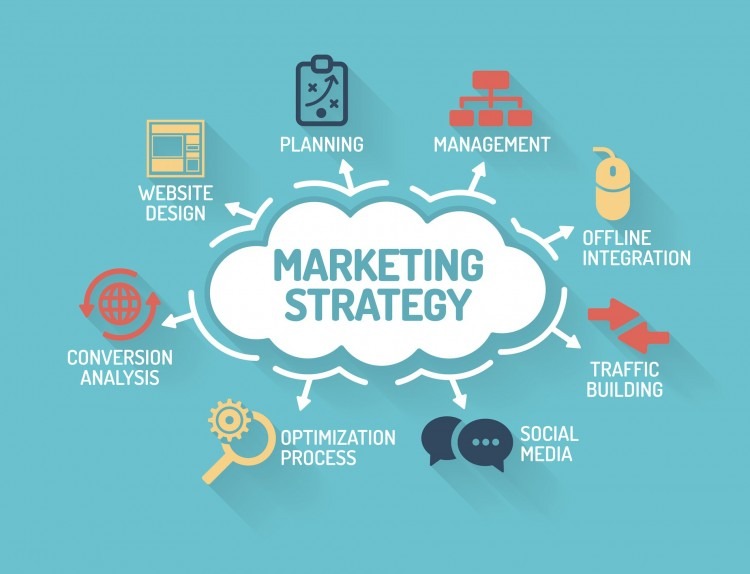
Understanding the Basics
Before diving into the intricacies of online marketing campaigns, it’s crucial to understand the foundational elements that underpin their success. Online marketing campaigns are multifaceted endeavors that require careful planning, execution, and analysis. They involve a blend of creativity, strategic thinking, and technical expertise to ensure that businesses can effectively connect with their audience and achieve their marketing goals.One of the key aspects of online marketing campaigns is the ability to tailor messages and strategies to specific audience segments. This requires a deep understanding of the target audience’s preferences, behaviors, and pain points. By creating personalized and relevant content, businesses can capture the attention of potential customers and foster meaningful connections.
Additionally, online marketing campaigns offer the advantage of real-time performance tracking. This means that marketers can monitor key metrics such as website traffic, click-through rates, conversion rates, and more. This data-driven approach enables businesses to make informed decisions, optimize their strategies, and achieve better results.
Furthermore, online marketing campaigns are characterized by their flexibility and adaptability. In a rapidly changing digital landscape, businesses must be agile and responsive to emerging trends, technologies, and consumer behaviors. By staying informed and open to experimentation, businesses can continually refine their campaigns and remain competitive in the online marketplace.
To optimize online marketing campaigns, you first need to understand the core components that make up a successful strategy. These include:
- Audience Insights: Knowing who your target audience is and what they want.
- Clear Objectives: Defining what you want to achieve with your campaign.
- Content Relevance: Crafting messages that resonate with your audience.
- Channel Selection: Choosing the right platforms to reach your audience.
- Performance Metrics: Identifying key performance indicators (KPIs) to measure success.
By mastering these basics, you’ll be on your way to creating campaigns that not only reach but also engage and convert your audience.
Key Metrics to Monitor
Metrics are the lifeblood of any online marketing campaign. They provide valuable insights into how your campaigns are performing and where improvements can be made. Here are some key metrics to keep an eye on:
- Click-Through Rate (CTR): Measures how many people click on your ad or content compared to how many saw it.
- Conversion Rate: The percentage of users who take a desired action, such as making a purchase or signing up for a newsletter.
- Bounce Rate: The percentage of visitors who leave your site after viewing only one page.
- Return on Investment (ROI): The revenue generated from your campaign compared to the cost of running it.
- Customer Lifetime Value (CLV): The total revenue you can expect from a customer throughout their relationship with your business.
By regularly monitoring these metrics, you can make informed decisions and adjust your strategies to optimize online marketing campaigns effectively.
Marketing Research and Analysis
Market research and analysis are foundational to optimizing online marketing campaigns. Understanding your market landscape enables you to tailor your strategies to meet the needs of your audience and outperform your competitors.

Identifying Your Target Audience
Identifying the target audience is a critical step in the development of any online marketing campaign. Understanding who your audience is, what they need, and how they interact with digital content is essential for crafting messages and strategies that resonate and drive engagement.
To identify the target audience, businesses should conduct thorough research and analysis, leveraging a combination of demographic, psychographic, and behavioral data. This information can be gathered through various sources, including market research, customer surveys, social media analytics, and website analytics.
Demographic data provides insights into the age, gender, location, income, and education level of the target audience. Psychographic data delves into their interests, values, lifestyles, and motivations. Behavioral data sheds light on their online habits, preferences, and purchasing behavior.
By creating detailed audience personas based on this data, businesses can gain a deeper understanding of their target audience and tailor their marketing efforts accordingly. Audience personas help marketers visualize the ideal customer and guide decisions related to messaging, content creation, and channel selection.
Ultimately, identifying the target audience enables businesses to deliver more relevant and personalized experiences, fostering stronger connections and driving better campaign outcomes
Knowing your audience is crucial for any marketing effort. The more you understand about your customers, the better you can tailor your messages to meet their needs and preferences. Here’s how you can identify your target audience:
- Demographics: Age, gender, location, income level, education, and occupation.
- Psychographics: Interests, lifestyle, values, and attitudes.
- Behavioral Data: Purchase history, website interactions, and product usage.
- Feedback and Surveys: Direct feedback from your audience can provide valuable insights into their preferences and expectations.
With this information, you can create detailed buyer personas that guide your marketing strategies and help you connect with your audience on a deeper level.
Competitor Analysis
Understanding what your competitors are doing is equally important. Competitor analysis involves examining their marketing strategies, strengths, weaknesses, and market positioning. Here’s how to conduct effective competitor analysis:
- Identify Key Competitors: Determine who your main competitors are in the industry.
- Analyze Their Strategies: Look at their marketing campaigns, content, and social media presence.
- SWOT Analysis: Identify your competitors’ strengths, weaknesses, opportunities, and threats.
- Benchmarking: Compare their performance metrics against your own to identify areas for improvement.
By understanding your competitors, you can find gaps in the market and opportunities to differentiate yourself, leading to more effective optimization of your online marketing campaigns.
Setting Clear Goals and Objectives
Every successful online marketing campaign begins with the establishment of clear and measurable objectives. These objectives serve as the guiding light for all campaign activities, helping businesses stay focused and aligned with their overarching goals. Without well-defined objectives, marketing efforts can become scattered and ineffective, leading to wasted resources and missed opportunities.
When setting objectives for an online marketing campaign, it’s essential to consider the broader business goals and how the campaign will contribute to achieving them. For example, a company aiming to increase brand awareness may set objectives related to expanding its online reach, growing its social media following, or generating media coverage. On the other hand, a business focused on driving sales might set objectives related to increasing website traffic, improving conversion rates, or boosting online sales revenue.
To ensure that objectives are effective, they should be specific, measurable, attainable, relevant, and time-bound (SMART). This framework provides a clear roadmap for campaign planning and execution, allowing businesses to track progress, evaluate performance, and make data-driven decisions.
By setting clear objectives, businesses can create a cohesive and purpose-driven online marketing campaign that aligns with their strategic priorities and delivers tangible results.
To optimize online marketing campaigns, setting clear and achievable goals is paramount. Goals guide your efforts, provide direction, and help measure success.
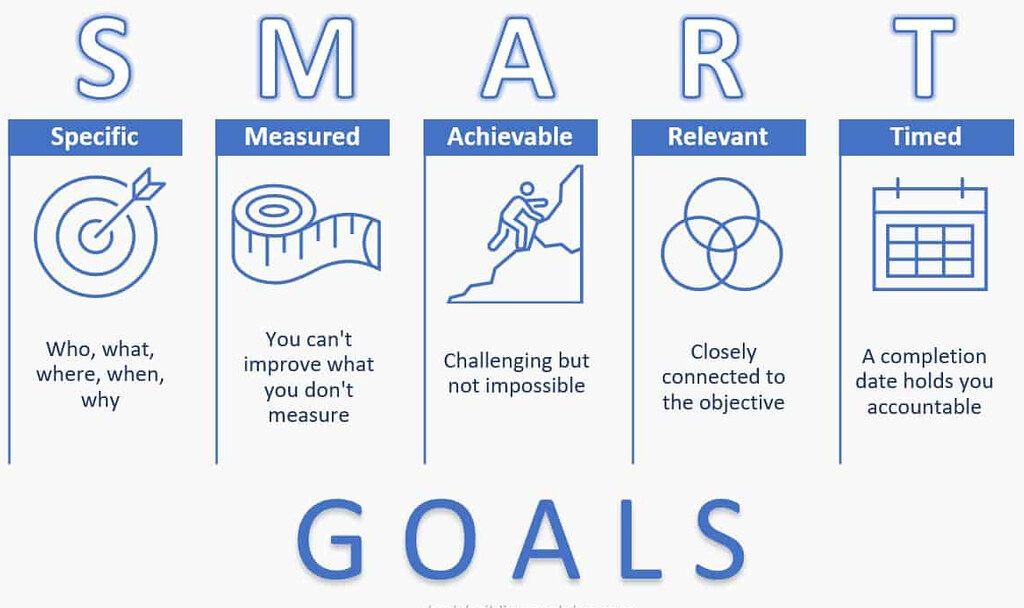
SMART Goals in Marketing
The SMART criteria—Specific, Measurable, Achievable, Relevant, and Time-bound—are essential in setting objectives that drive success. Here’s a breakdown of how to apply SMART goals in your campaigns:
- Specific: Define clear and precise goals, such as “increase website traffic by 20% in six months.”
- Measurable: Use metrics to track progress and assess the effectiveness of your strategies.
- Achievable: Set realistic goals that are within your reach, considering your resources and capabilities.
- Relevant: Ensure your goals align with your overall business objectives and market conditions.
- Time-bound: Establish deadlines to create a sense of urgency and keep your team focused.
By setting SMART goals, you create a roadmap that guides your marketing efforts and helps optimize your campaigns for success.
Aligning Goals with Business Strategy
Your marketing goals should not exist in isolation; they must align with your broader business strategy. Here’s how to ensure alignment:
- Understand Business Objectives: Know your company’s long-term vision and mission.
- Integrate Marketing Goals: Ensure that your marketing objectives support and enhance your business goals.
- Collaborate Across Departments: Work with other departments to ensure a cohesive approach to achieving company-wide objectives.
- Regularly Review and Adjust: Continuously assess your goals and strategies to ensure they remain relevant and aligned with the evolving business environment.
Aligning your marketing goals with your business strategy ensures that your efforts are cohesive and contribute to the overall success of your organization.
Choosing the Right Platforms
In the realm of online marketing, choosing the right platforms is a strategic decision that can significantly impact the success of a campaign. With a multitude of digital channels available, businesses must carefully evaluate which platforms align with their objectives, audience, and resources.
Each platform offers unique advantages and caters to different audience segments. For example, social media platforms like Facebook, Instagram, and Twitter are ideal for reaching and engaging with a broad audience, building brand awareness, and driving social interactions. Search engines like Google and Bing are essential for capturing intent-driven traffic through search engine optimization (SEO) and pay-per-click (PPC) advertising.Email marketing platforms provide a direct and personalized way to communicate with potential and existing customers, while video platforms like YouTube offer opportunities for storytelling and visual engagement. Influencer marketing platforms connect businesses with influential personalities who can amplify their message and reach new audiences.
When selecting platforms, businesses should consider factors such as target audience demographics, platform features, budget, and campaign goals. It’s also important to stay informed about emerging platforms and trends, as the digital landscape is constantly evolving.By choosing the right platforms, businesses can maximize their reach, engagement, and impact, ensuring that their online marketing campaigns deliver the desired results.
Crafting Compelling Content
Compelling content is the heart and soul of any successful online marketing campaign. It is the vehicle through which businesses convey their brand message, engage their audience, and drive desired actions. Whether it’s a blog post, social media update, video, or email, content plays a pivotal role in capturing attention and inspiring engagement.
To craft compelling content, businesses must first understand their audience’s needs, preferences, and pain points. By addressing these elements and providing value, businesses can create content that resonates and encourages interaction. Storytelling is a powerful technique that can be employed to create emotional connections and memorable experiences.
Content should also be tailored to the platform on which it is distributed. For example, concise and visually appealing content is ideal for social media, while in-depth and informative content works well for blog posts and articles. Videos and visuals can enhance engagement and drive higher retention rates.
Additionally, it’s important to maintain a consistent brand voice and tone across all content. This helps build brand recognition and trust, reinforcing the brand’s identity and values.
Crafting compelling content requires creativity, strategic thinking, and a deep understanding of the audience. By prioritizing quality and relevance, businesses can create content that not only captivates but also converts.
Once you have identified your target audience, the next step is to plan your marketing campaign. This plan should include activities, timelines, and budgets for each activity.
In addition, content is an important part of online marketing campaigns. Content needs to be unique, attractive and valuable to consumers. Some common forms of content include:
- Blog Posts: Provide useful information and engage your readers.
- Video: This form of content is becoming increasingly popular and accessible.
- Infographic: Presents information in a visual and vivid way.
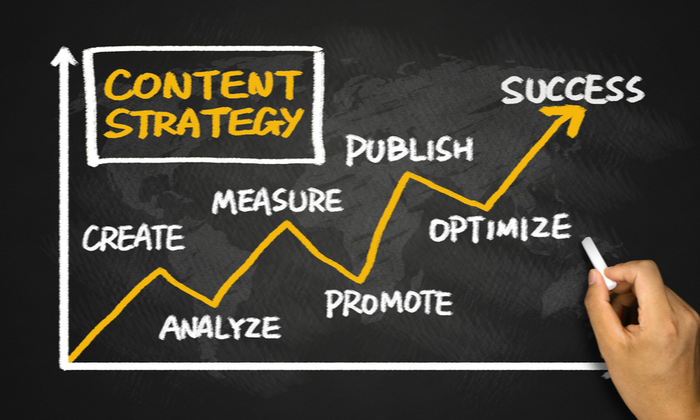
Crafting Engaging Content
Engaging content captures your audience’s attention and encourages interaction. Here’s how to create content that stands out:
- Know Your Audience: Understand their needs, interests, and pain points.
- Create Value: Offer valuable information, insights, or entertainment that meets your audience’s needs.
- Tell Stories: Use storytelling to create emotional connections and make your content memorable.
- Use Visuals: Incorporate images, videos, and infographics to enhance engagement and improve comprehension.
- Encourage Interaction: Invite comments, shares, and feedback to foster community and engagement.
By crafting engaging content, you can capture your audience’s attention and drive meaningful interactions that enhance your marketing efforts.
Utilizing SEO for Content Optimization
Search engine optimization (SEO) is a critical component of content strategy. It ensures that your content is discoverable by your target audience on search engines like Google. Here’s how to optimize your content for SEO:
- Keyword Research: Identify relevant keywords that your audience is searching for. Use tools like Google Keyword Planner or SEMrush to find keywords with a good balance of search volume and competition.
- On-Page Optimization: Use keywords naturally within your content, titles, and meta descriptions. Ensure that your headings, subheadings, and image alt texts are optimized for search engines.
- High-Quality Content: Focus on creating comprehensive, informative, and unique content. Search engines favor content that thoroughly answers user queries and provides value.
- Internal Linking: Use internal links to connect related content on your website. This helps search engines understand the structure of your site and can improve rankings.
- Mobile Optimization: Ensure that your content is mobile-friendly, as search engines prioritize mobile-responsive websites.
By implementing effective SEO strategies, you can improve your content’s visibility and drive more organic traffic to your site.
Leveraging Social Media
Social media platforms offer unparalleled opportunities for businesses to connect with their audience, build brand awareness, and drive traffic to their websites. However, optimizing your social media efforts requires a strategic approach.

Choosing the Right Social Media
Not all social media platforms are created equal, and choosing the right ones is essential for reaching your target audience. Here’s how to select the most suitable platforms for your business:
- Understand Your Audience: Identify where your audience spends most of their time online. Different demographics prefer different platforms.
- Evaluate Platform Strengths: Each platform has unique features and strengths. For example, Instagram is visual-centric, while LinkedIn is more professional.
- Set Platform-Specific Goals: Determine what you want to achieve on each platform, whether it’s increasing brand awareness, driving website traffic, or generating leads.
- Consider Resource Allocation: Ensure you have the resources to maintain an active presence on your chosen platforms. It’s better to excel on a few platforms than to spread yourself too thin.
Selecting the right platforms allows you to focus your efforts where they will have the most impact, leading to more effective social media optimization.
Social Media Analytics
Analytics are essential for understanding the performance of your social media efforts. By analyzing data, you can identify what’s working, what needs improvement, and how to optimize your strategies. Here’s how to use social media analytics effectively:
- Track Key Metrics: Monitor metrics such as engagement rate, reach, impressions, and follower growth. These metrics provide insights into your content’s performance and audience interaction.
- Analyze Audience Behavior: Use analytics tools to understand your audience’s behavior, preferences, and demographics. This information can guide your content creation and posting schedule.
- Evaluate Content Performance: Determine which types of content receive the most engagement and why. Use this information to refine your content strategy and focus on high-performing formats.
- Adjust Strategies: Use insights from analytics to adjust your strategies and improve your social media campaigns. Continuously test different approaches and iterate based on data-driven insights.
By leveraging social media analytics, you can make informed decisions that enhance your campaigns and drive better results.
Email Marketing Optimization
Email marketing remains one of the most effective channels for reaching and engaging your audience. However, optimizing your email campaigns requires thoughtful strategies to ensure your messages resonate and drive action.
Email marketing remains one of the most effective channels for engaging with both potential and existing customers. With a well-crafted email marketing strategy, businesses can deliver personalized messages directly to the inbox of their target audience, fostering relationships and driving conversions.
One of the key advantages of email marketing is its ability to segment audiences based on various criteria such as demographics, behavior, and past interactions. By creating targeted email lists, businesses can send highly relevant content that resonates with each segment, increasing the likelihood of engagement and conversion.
Personalization is a crucial element of successful email marketing strategies. Personalizing emails with the recipient’s name, tailored content, and personalized recommendations can significantly enhance the user experience and boost open and click-through rates. Tools like dynamic content and automation can help streamline the personalization process, ensuring that each recipient receives relevant messages at the right time.
Additionally, email marketing provides an excellent platform for nurturing leads and guiding them through the sales funnel. By delivering valuable content, exclusive offers, and timely follow-ups, businesses can build trust and encourage prospects to take the desired actions.
To maximize the effectiveness of email marketing campaigns, businesses should prioritize creating compelling subject lines, engaging content, and clear calls to action. Regularly analyzing email performance metrics such as open rates, click-through rates, and conversion rates can provide valuable insights for continuous improvement.
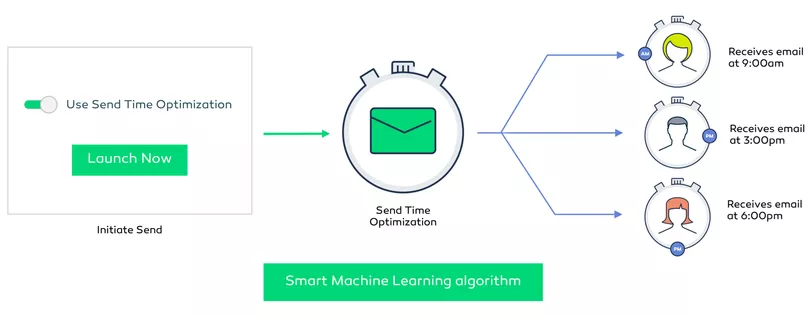
Building Effective Email Lists
A quality email list is the foundation of successful email marketing. Building an effective list involves collecting addresses from individuals genuinely interested in your content or products. Here’s how to do it:
- Offer Valuable Incentives: Provide incentives such as exclusive content, discounts, or free trials in exchange for email sign-ups.
- Use Signup Forms Strategically: Place signup forms on high-traffic areas of your website, such as the homepage, blog posts, and landing pages.
- Leverage Social Media: Promote your email list on social media platforms to reach a broader audience and encourage sign-ups.
- Ensure Compliance: Follow legal requirements, such as the GDPR or CAN-SPAM Act, to protect user data and maintain trust.
By focusing on quality over quantity, you can build a list of engaged subscribers who are more likely to respond positively to your emails.
Personalization and Segmentation
Personalization and segmentation are key strategies for enhancing the effectiveness of your email campaigns. Here’s how to implement them:
- Segment Your Audience: Divide your email list into segments based on demographics, behavior, or preferences. This allows you to tailor content to specific groups, increasing relevance and engagement.
- Personalize Content: Use recipient data to personalize emails with names, product recommendations, or relevant content. Personalized emails have higher open and click-through rates.
- Automate Targeted Campaigns: Use automation tools to trigger emails based on user actions, such as cart abandonment or recent purchases. This ensures timely and relevant communication.
- Test and Optimize: Continuously test different elements of your emails, such as subject lines, content, and CTAs, to determine what resonates best with your audience.
By focusing on personalization and segmentation, you can create more meaningful connections with your audience and improve email marketing results.
Pay-Per-Click (PPC) Advertising
Pay-per-click advertising is a powerful tool for driving targeted traffic to your website. However, optimizing PPC campaigns requires careful planning and execution to ensure a positive return on investment.
Pay-per-click (PPC) advertising is a powerful tool for driving targeted traffic and achieving immediate results in online marketing campaigns. Unlike organic strategies that take time to yield results, PPC allows businesses to reach their audience quickly through paid advertisements on search engines and other platforms.
In a PPC campaign, businesses bid on specific keywords relevant to their products or services. When users search for these keywords, their ads appear at the top of the search results, increasing visibility and driving clicks. The cost of a PPC campaign is determined by the cost-per-click (CPC), which varies based on competition and keyword popularity.
One of the key advantages of PPC advertising is its ability to target specific audience segments. Businesses can define criteria such as location, demographics, and interests to ensure their ads reach the right people at the right time. This level of precision targeting enhances the effectiveness of the campaign and maximizes return on investment.
To optimize PPC campaigns, businesses should continuously monitor performance metrics such as click-through rates, conversion rates, and ad relevance. A/B testing different ad copy, creative elements, and landing pages can provide valuable insights for refining the campaign and achieving better results.
By integrating PPC advertising into their online marketing campaigns, businesses can achieve increased visibility, higher conversion rates, and a competitive edge in the digital marketplace.
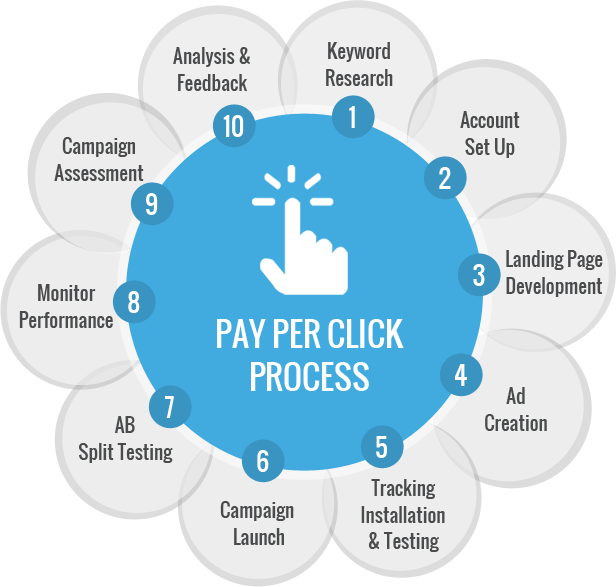
Selecting the Right Keywords
Keyword selection is a critical aspect of PPC advertising. The right keywords ensure that your ads reach the most relevant audience. Here’s how to select effective keywords:
- Conduct Thorough Research: Use keyword research tools to identify high-volume, low-competition keywords relevant to your business.
- Consider User Intent: Choose keywords that align with the user’s intent, whether informational, navigational, or transactional.
- Focus on Long-Tail Keywords: Long-tail keywords are more specific and often have less competition, making them ideal for targeting niche audiences.
- Regularly Review and Update: Continuously monitor keyword performance and adjust your selections based on data insights and changing trends.
By selecting the right keywords, you can improve your ad targeting and achieve better campaign results.
Ad Copy and Landing Page Optimization
Effective ad copy and landing pages are essential for converting clicks into actions. Here’s how to optimize these elements:
- Craft Compelling Ad Copy: Write clear, concise, and persuasive ad copy that highlights the benefits of your product or service and includes a strong call-to-action (CTA).
- Ensure Landing Page Relevance: Match the message and promise of your ad with the content on your landing page to provide a seamless user experience.
- Optimize for Conversions: Design landing pages with conversion in mind, using clear CTAs, minimal distractions, and trust signals such as testimonials or guarantees.
- Test and Iterate: Continuously test different elements of your ads and landing pages to determine what works best. Use A/B testing to refine your approach and improve results.
By focusing on ad copy and landing page optimization, you can increase conversions and maximize the effectiveness of your PPC campaigns.
Utilizing Influencer Partnerships
Influencer marketing has become a popular strategy for brands looking to reach new audiences and build credibility. Optimizing these partnerships involves selecting the right influencers and measuring the impact of your campaigns.
Influencer marketing has emerged as a powerful strategy for reaching and engaging with target audiences through trusted voices in the digital space. By partnering with influencers who have a loyal following, businesses can leverage their credibility and reach to amplify their message and drive brand awareness.
Influencers come in various forms, from macro-influencers with millions of followers to micro-influencers with a smaller but highly engaged audience. The key to successful influencer marketing is identifying the right influencers whose values and audience align with the brand. This ensures that the partnership feels authentic and resonates with the influencer’s followers.
Once the right influencers are identified, businesses can collaborate on creating engaging and authentic content that showcases their products or services. This could include sponsored posts, product reviews, unboxing videos, or live demonstrations. The goal is to create content that feels genuine and provides value to the audience.
Influencer marketing also offers an opportunity for businesses to tap into new audiences and markets. By leveraging the influencer’s reach, businesses can expand their brand presence and connect with potential customers who may not have been reached through traditional marketing channels.
To measure the success of influencer marketing campaigns, businesses should track metrics such as engagement rates, reach, website traffic, and conversions. These insights can help refine future strategies and maximize the impact of influencer partnerships.
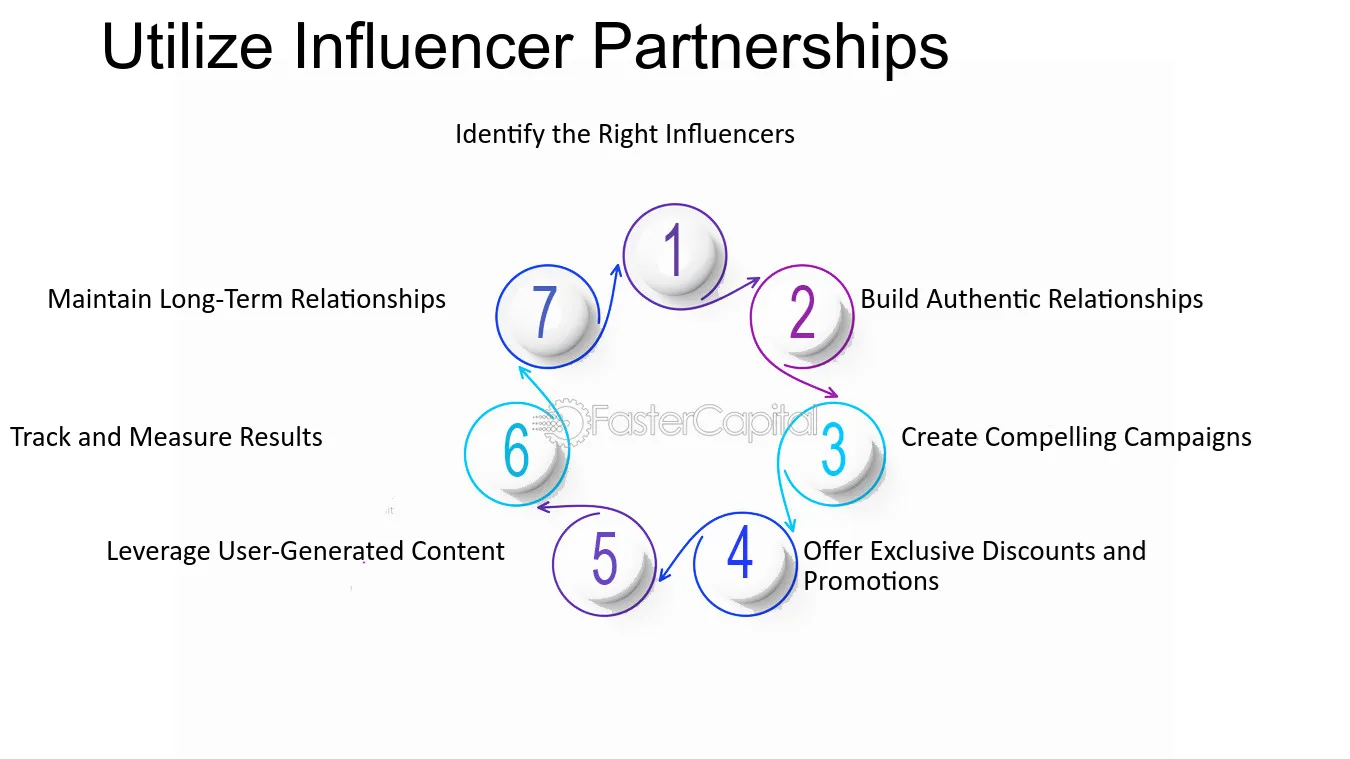
Finding the Right Influencers
Choosing the right influencers is crucial for the success of your campaigns. Here’s how to find and select influencers who align with your brand:
- Define Your Goals: Identify what you want to achieve with your influencer partnerships, whether it’s brand awareness, engagement, or sales.
- Research Potential Influencers: Look for influencers who share your brand values and have an engaged audience that matches your target demographic.
- Evaluate Engagement: Analyze potential influencers’ engagement rates, content quality, and audience interactions to ensure authenticity and effectiveness.
- Consider Micro-Influencers: Micro-influencers often have more engaged audiences and can be more cost-effective than larger influencers.
By choosing influencers carefully, you can ensure that your partnerships are mutually beneficial and drive meaningful results.
Measuring ROI from Influencer Campaigns
Measuring the return on investment (ROI) from influencer campaigns is essential to understanding their impact and value. Here’s how to measure ROI effectively:
- Set Clear KPIs: Define key performance indicators (KPIs) such as reach, engagement, website traffic, or sales generated from the campaign.
- Use Tracking Links: Provide influencers with unique tracking links or promo codes to monitor the traffic and conversions driven by their content.
- Analyze Engagement Metrics: Evaluate likes, shares, comments, and other engagement metrics to assess the effectiveness of the content.
- Gather Feedback: Collect feedback from both the influencer and their audience to gain insights into the campaign’s reception and areas for improvement.
By measuring ROI, you can assess the success of your influencer partnerships and optimize future campaigns for better results.
Video Marketing Techniques
Video marketing has become a dominant force in the digital landscape, offering businesses a visually engaging and effective way to communicate their message and connect with their audience. With the rise of platforms like YouTube, TikTok, and Instagram Reels, video content has become increasingly popular and influential in online marketing campaigns.
One of the key advantages of video marketing is its ability to convey complex information in an easily digestible format. Whether it’s a product demonstration, tutorial, testimonial, or brand story, videos can captivate viewers and communicate key messages more effectively than text alone. Visual elements, sound, and motion work together to create a memorable and immersive experience.
To succeed in video marketing, businesses should focus on creating high-quality and relevant content that resonates with their target audience. This involves understanding audience preferences, crafting compelling narratives, and leveraging storytelling techniques. Additionally, videos should be optimized for each platform, considering factors such as video length, format, and captioning.
Video marketing also offers opportunities for engagement and interaction. Businesses can encourage viewers to like, comment, share, and subscribe, fostering a sense of community and connection. Live streaming is another powerful tool that allows businesses to engage with their audience in real time, answer questions, and provide valuable insights.
By incorporating video marketing techniques into their online marketing campaigns, businesses can increase brand awareness, drive engagement, and ultimately achieve their marketing objectives.
Data-Driven Decision Making
Data-driven decision making is the backbone of successful online marketing optimization. By leveraging data, you can make informed decisions that enhance your campaigns and drive better outcomes.
Leveraging Analytics Tools
Analytics tools provide valuable insights into your marketing efforts, helping you understand what works and what doesn’t. Here’s how to leverage these tools effectively:
- Use Comprehensive Platforms: Utilize platforms like Google Analytics, HubSpot, or Adobe Analytics to gather data on website traffic, user behavior, and conversions.
- Set Up Goal Tracking: Define and track specific goals within your analytics platform to measure success and identify areas for improvement.
- Monitor Real-Time Data: Keep an eye on real-time data to quickly identify and address any issues or opportunities.
- Generate Insights Reports: Regularly create insights reports to share with your team and stakeholders, highlighting key findings and actionable recommendations.
- Google Analytics: Track website traffic, user behavior, and conversion rates to understand how users interact with your site.
- Social Media Insights: Use platform-specific analytics to measure engagement and reach on social media.
- Email Marketing Analytics: Monitor open rates, click-through rates, and conversion metrics to optimize email campaigns.
- CRM Systems: Use customer relationship management (CRM) tools to gather insights about your customers’ preferences and behaviors.
By effectively using analytics tools, you can gain a deeper understanding of your marketing performance and make data-driven decisions that optimize your campaigns.
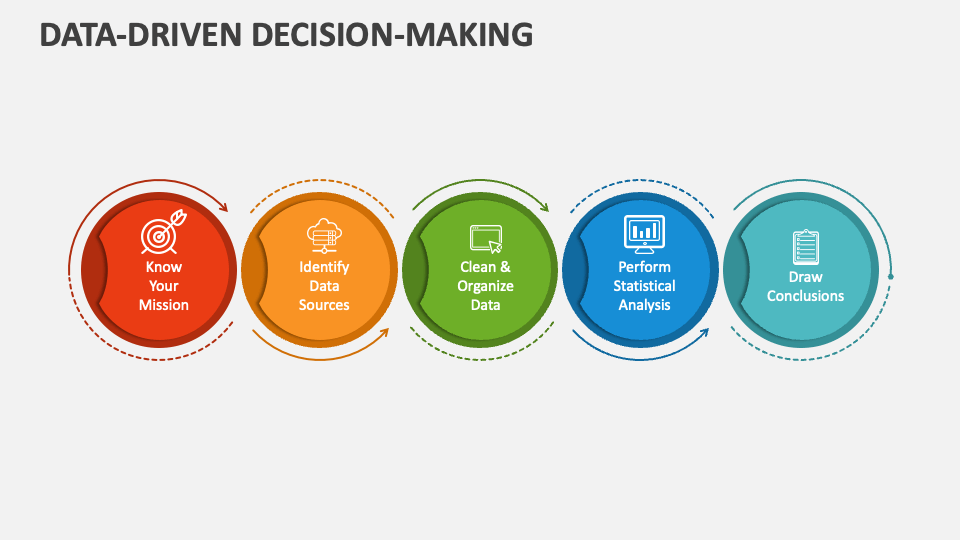
High-Quality Content Creation
Creating high-quality content is paramount for SEO and user engagement. Here’s how to ensure your content meets the highest standards:
- Originality: Always strive for unique content that adds value and offers new insights.
- Relevance: Ensure your content is relevant to your audience’s needs and interests.
- Readability: Use clear, concise language and break up text with headings, subheadings, and bullet points.
- Length: While longer content often ranks better, ensure that every word serves a purpose and contributes to the topic.
- Internal and External Linking: Use internal links to guide users to related content on your site and external links to authoritative sources.
SEO optimization helps improve your content’s visibility, driving more traffic and engagement. By focusing on both the technical and creative aspects of content creation, you can significantly enhance your online marketing campaigns.
A/B Testing and Iteration
A/B testing is a critical component of optimizing online marketing campaigns, allowing businesses to experiment with different elements and determine what works best for their audience. By conducting controlled tests and analyzing the results, businesses can make data-driven decisions and optimize their campaigns for better performance.
In an A/B test, two versions of a marketing element, such as an email subject line, landing page, or ad creative, are compared to determine which one performs better. The test group is divided into two segments, with each segment receiving a different version. The performance of each version is then measured against predefined metrics, such as open rates, click-through rates, or conversion rates.A/B testing provides valuable insights into user preferences and behaviors, helping businesses understand what resonates with their audience and drives desired actions. By continuously testing and iterating, businesses can refine their messaging, design, and strategies to maximize impact and achieve their marketing objectives.
To conduct effective A/B tests, businesses should establish clear hypotheses, set measurable goals, and ensure that tests are conducted under controlled conditions. It’s important to test one variable at a time to isolate its impact and ensure reliable results.
By embracing a culture of experimentation and optimization, businesses can continuously improve their online marketing campaigns, stay ahead of the competition, and deliver exceptional experiences to their audience.
A/B testing is a powerful technique for optimizing various elements of your marketing campaigns. Here’s how to implement it effectively:
- Identify Variables: Determine which elements to test, such as headlines, images, or calls to action.
- Create Variations: Develop different versions of the element you’re testing to compare performance.
- Analyze Results: Use data to assess which version performs better and why.
- Iterate Continuously: Implement the winning version and continue testing other elements to drive ongoing improvements.
By embracing A/B testing and iteration, you can refine your strategies, enhance user experience, and optimize online marketing campaigns for better results.
Monitor and Evaluate Results
Any marketing effort will be in vain if you don’t track and evaluate the results. Using analytics tools to measure the performance of your campaigns will help you identify what’s working well and what needs improvement.
Some metrics to track include:
- Conversion Rate: Measures the effectiveness of a campaign based on the number of customers who take the desired action.
- Cost per Visit: Helps you determine if your advertising costs are reasonable.
- Average Time on Page: Shows how engaging the content you provide is.
Budgeting for Campaigns
Budgeting is a crucial aspect of planning and executing successful online marketing campaigns. By allocating resources effectively and strategically, businesses can maximize their return on investment (ROI) and achieve their marketing goals within the constraints of their budget.
When budgeting for an online marketing campaign, businesses should consider various factors such as campaign objectives, target audience, chosen platforms, and desired outcomes. Each platform and strategy has its own cost structure, and businesses should carefully evaluate the costs and benefits of each option.
It’s important to allocate budget across different channels and tactics to ensure a balanced and comprehensive approach. For example, meaningful connections that contribute to long-term brand loyalty.
Furthermore, social media platforms are ideal for fostering a sense of community around the brand. By actively engaging with followers, responding to comments, and participating in conversations, businesses can create a welcoming and interactive environment. This not only enhances the brand’s reputation but also encourages user-generated content and word-of-mouth marketing.
To maximize the effectiveness of social media in online marketing campaigns, businesses should also stay informed about the latest trends and platform updates. Social media is a dynamic space, and staying ahead of changes ensures that businesses can capitalize on new opportunities and maintain a competitive edge.
In summary, leveraging social media effectively requires a thoughtful approach that prioritizes engagement, community building, and adaptability. By integrating social media into their online marketing campaigns, businesses can amplify their reach, engage their audience, and drive meaningful results.
Current Marketing Trends
The world of marketing is constantly changing and evolving. To optimize your online marketing campaigns, you need to keep up with and apply the latest trends in the industry. Here are some of the prominent trends that you should not miss.

Marketing Automation
Marketing automation has become an important tool in optimizing online marketing campaigns. This technology helps businesses save time, improve efficiency, and personalize the customer experience.
- Content Personalization: Automation tools have the ability to analyze data and create content tailored to each target audience, thereby increasing engagement.
- Real-time Interactions: You can send messages to customers as soon as they take action on your website, increasing conversions.
Multi-Channel Marketing
Multi-channel marketing is a growing trend. Instead of focusing on just one channel, you need to combine different channels such as Email, social media, SEO and paid advertising to create a synchronized and effective campaign.
- Create a seamless experience: Customers feel more comfortable when they receive consistent messages from multiple channels.
- Increase reach: Each channel has its own characteristics, combining them will help you reach a larger audience.
Video and Live Stream Content
Video content is taking over the online marketing landscape. Short, easy-to-consume videos not only increase engagement but also help convey messages effectively.
- Livestream: Live events on social media are becoming a trusted way to engage with customers and build trust. Customers can ask questions and you can respond immediately, creating an opportunity for close interaction.
- How-to videos: Provide useful information and help customers better understand your product or service.
Data Analytics and Insights
Data analytics plays a pivotal role in optimizing online marketing campaigns, providing businesses with valuable insights into audience behavior, campaign performance, and areas for improvement. By leveraging data analytics, businesses can make informed decisions, refine their strategies, and drive better results.
One of the primary benefits of data analytics is the ability to track key performance indicators (KPIs) such as website traffic, conversion rates, click-through rates, and engagement metrics. By analyzing these metrics, businesses can gain a deeper understanding of how their campaigns are performing and identify trends and patterns.
Data analytics also enables businesses to segment their audience and tailor their marketing efforts accordingly. By understanding the demographics, interests, and behaviors of different audience segments, businesses can create personalized and targeted campaigns that resonate with each group.
Additionally, data analytics provides insights into customer journeys and touchpoints, helping businesses understand how users interact with their brand across various channels. This information can be used to optimize the customer experience, improve conversion rates, and increase customer satisfaction.
To effectively utilize data analytics, businesses should invest in the right tools and technologies, such as Google Analytics, social media analytics, and CRM systems. These tools provide comprehensive data and reporting capabilities, allowing businesses to monitor performance, identify opportunities, and make data-driven decisions.
By harnessing the power of data analytics and insights, businesses can optimize their online marketing campaigns, achieve their marketing goals, and drive sustainable growth.
Conclude
Optimizing your online marketing campaign is a continuous process that requires attention to detail. From defining your target audience, creating content, to tracking and evaluating results, it all requires careful consideration and a clear strategy. By adopting the latest trends in marketing, as well as leveraging the power of social media and content marketing, you will have a greater chance of succeeding in this competitive world.
FAQs
What are the key components of a successful online marketing campaign?
A successful online marketing campaign includes clear objectives, a well-defined target audience, a robust content strategy, and effective use of digital channels.
How can I identify my target audience?
Identify your target audience by conducting market research, analyzing customer data, and creating detailed buyer personas.
What is the importance of A/B testing in online marketing?
A/B testing helps you optimize your campaigns by comparing different versions of an element to determine which one performs better.
How can I ensure compliance with legal regulations in my marketing campaigns?
Ensure compliance by familiarizing yourself with relevant laws, such as GDPR and the CAN-SPAM Act, and adhering to ethical marketing practices.
What are some emerging trends in online marketing?
Emerging trends include artificial intelligence, augmented reality, and voice search. Staying informed about these trends can enhance your marketing efforts.
How can I avoid common mistakes in online marketing?
Avoid common mistakes by setting clear objectives, understanding your audience, and continuously monitoring and optimizing your campaigns.
Comment Policy: We truly value your comments and appreciate the time you take to share your thoughts and feedback with us.
Note: Comments that are identified as spam or purely promotional will be removed.
To enhance your commenting experience, consider creating a Gravatar account. By adding an avatar and using the same e-mail here, your comments will feature a unique and recognizable avatar, making it easier for other members to identify you.
Please use a valid e-mail address so you can receive notifications when your comments receive replies.